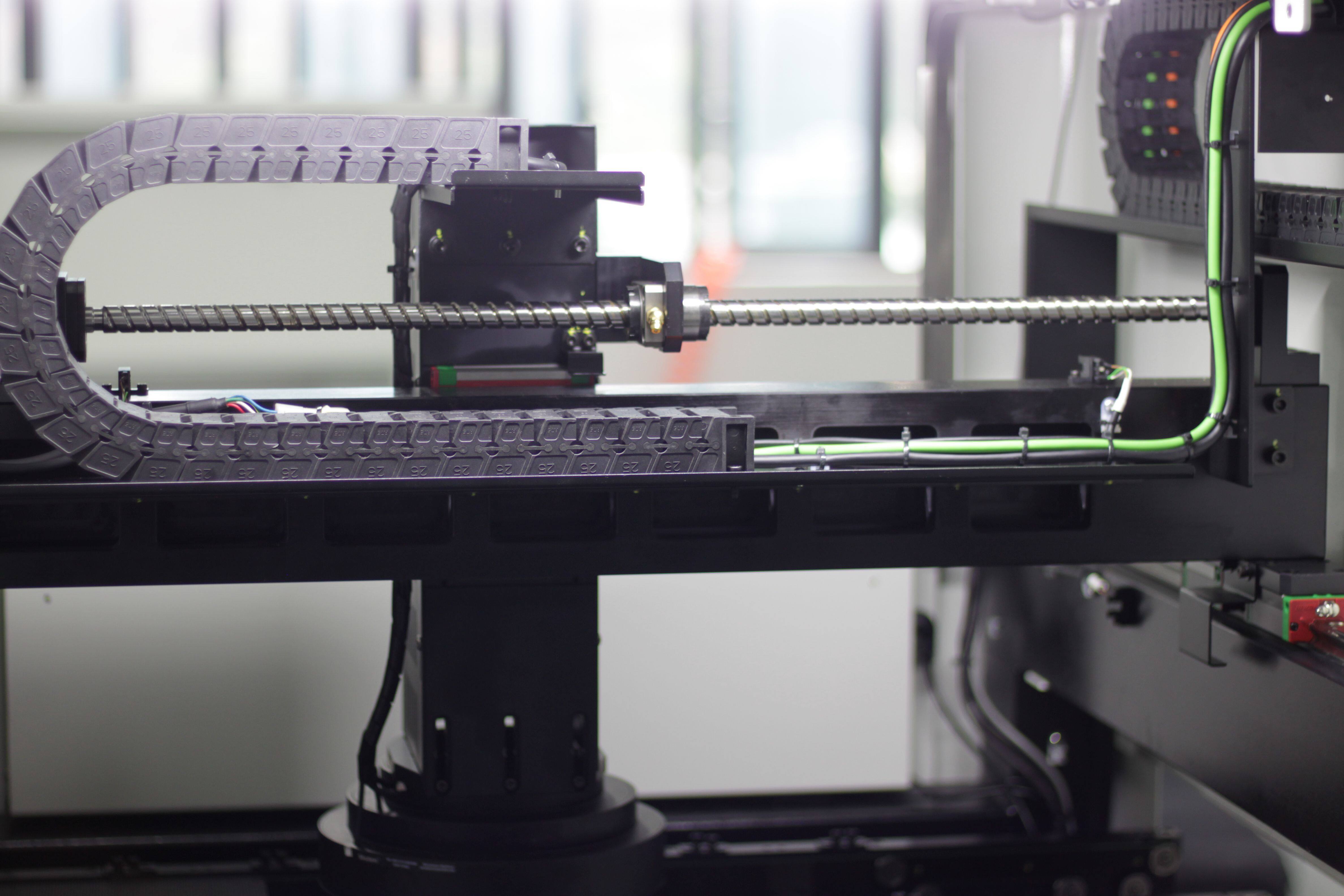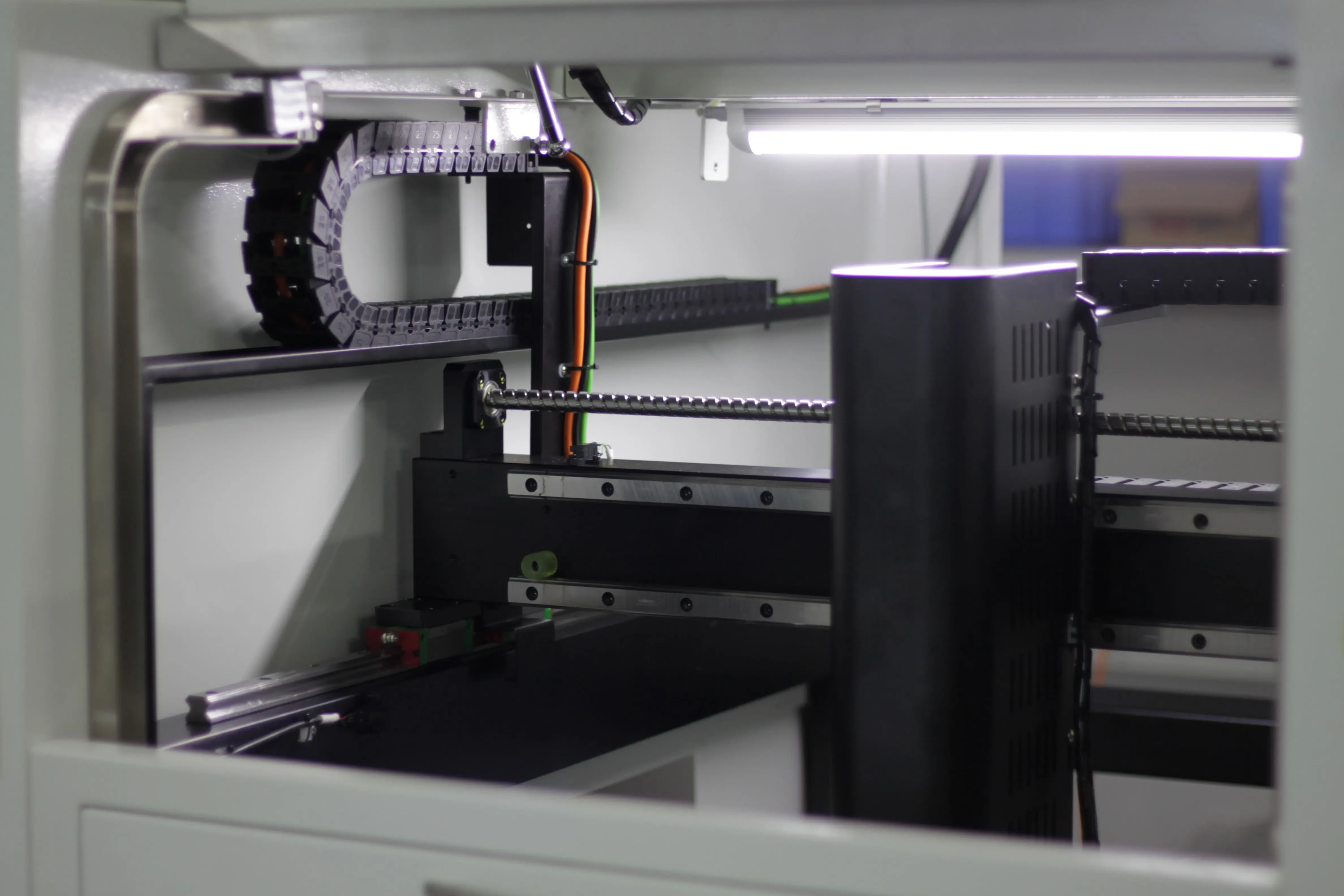E-Mail-Formatfehler
emailCannotEmpty
emailDoesExist
pwdLetterLimtTip
inconsistentPwd
pwdLetterLimtTip
inconsistentPwd


Streamlining Manufacturing Excellence: Exploring the Latest in SMT Production Line Equipment
In the dynamic landscape of electronics manufacturing, Surface Mount Technology (SMT) production line equipment stands as the backbone of efficiency and precision. From solder paste printers to pick-and-place machines, every component plays a pivotal role in realizing streamlined production processes. In this comprehensive guide, we delve into the intricate world of SMT production line equipment, exploring its evolution, functionalities, and indispensable role in shaping modern manufacturing excellence.
Evolution of SMT Production Line Equipment
Pioneering Innovations in SMT Production Line Equipment
The evolution is a testament to relentless innovation and technological advancement. From the advent of automated solder paste dispensers to the integration of AI-driven pick-and-place systems, each milestone has propelled the industry towards greater efficiency and accuracy.
The early days of SMT assembly were marked by manual soldering processes, which were labor-intensive and prone to human error. However, with the introduction of automated solder paste dispensers, manufacturers gained the ability to precisely deposit solder paste onto PCBs, laying the foundation for high-speed, high-precision assembly processes.
As electronic components continued to shrink in size and complexity, the need for advanced pick-and-place machines became apparent. Early pick-and-place systems relied on mechanical gantries and rudimentary vision systems for component placement. However, the advent of advanced robotics and vision-guided technology revolutionized pick-and-place operations, enabling manufacturers to achieve unparalleled levels of speed, accuracy, and versatility.
Revolutionizing Assembly Processes with Advanced SMT Equipment
In today's fast-paced manufacturing environment, the demand for high-speed, high-precision assembly solutions is ever-growing. Advanced SMT production line equipment, equipped with state-of-the-art vision systems and intelligent control algorithms, is revolutionizing assembly processes, enabling manufacturers to achieve unprecedented levels of productivity and quality.
Modern solder paste printers are equipped with features such as stencil tension control, automatic fiducial recognition, and closed-loop feedback systems, ensuring precise solder paste deposition and minimizing defects. Likewise, pick-and-place machines boast advanced robotics, multi-axis motion control, and high-resolution vision systems, allowing for the rapid and accurate placement of surface mount components onto PCBs.
Reflow ovens, another critical component of the SMT assembly process, have also undergone significant advancements. Precise temperature profiling, nitrogen inerting systems, and closed-loop conveyor control ensure consistent heating and reliable solder joint formation, minimizing the risk of defects such as tombstoning and solder bridging.
Similarly, inspection systems have evolved to meet the demands of modern electronics manufacturing. Automated optical inspection (AOI) systems utilize high-resolution cameras, advanced algorithms, and machine learning techniques to detect anomalies such as component misplacement, solder defects, and PCB damage, enabling rapid feedback and corrective action.
Key Components of SMT Production Line Equipment
Solder Paste Printers: Precision at the Forefront
Solder paste printers form the foundation of SMT assembly, facilitating the accurate deposition of solder paste onto PCBs. With features such as stencil tension control and automatic fiducial recognition, modern solder paste printers ensure precise solder paste application, minimizing defects and maximizing production yields.
Solder paste printing is a critical step in the SMT assembly process, as it determines the quality of solder joints and ultimately the reliability of the finished product. Modern solder paste printers utilize advanced technologies such as laser-based fiducial recognition and closed-loop feedback systems to ensure precise solder paste deposition, even on complex PCB designs.
Pick-and-Place Machines: Efficiency Redefined
Pick-and-place machines are the workhorses of SMT assembly lines, responsible for accurately placing surface mount components onto PCBs. With advancements in robotics and vision-guided technology, today's pick-and-place machines offer unmatched speed, accuracy, and versatility, enabling manufacturers to meet the demands of ever-shrinking component sizes and increasingly complex board designs.
The evolution of pick-and-place machines has been driven by the need for higher throughput, greater accuracy, and increased flexibility in component handling. Early pick-and-place systems relied on mechanical gantries and manual component feeding, limiting their speed and precision. However, with the advent of advanced robotics and vision systems, modern pick-and-place machines can achieve placement speeds of up to 100,000 components per hour with placement accuracies of less than 50 microns.
Reflow Ovens: Perfecting the Soldering Process
Reflow ovens play a crucial role in the SMT assembly process, melting and reflowing solder paste to create reliable solder joints. Precise temperature profiling and conveyor speed control ensure consistent heating across the PCB, minimizing the risk of solder defects such as tombstoning and solder bridging. Advanced reflow ovens also feature nitrogen inerting systems, further enhancing solder joint quality and reliability.
Reflow soldering is a critical step in the SMT assembly process, as it determines the quality and reliability of solder joints. Modern reflow ovens utilize advanced heating technologies such as forced convection and infrared radiation to achieve precise temperature profiles, ensuring optimal solder joint formation and minimizing the risk of defects.
Inspection Systems: Ensuring Quality Assurance
Quality assurance is paramount in SMT assembly, and inspection systems play a vital role in identifying defects and ensuring product integrity. Automated optical inspection (AOI) systems utilize high-resolution cameras and advanced algorithms to detect anomalies such as component misplacement, solder defects, and PCB damage, enabling rapid feedback and corrective action.
AOI systems are an integral part of the SMT assembly process, as they allow manufacturers to identify and rectify defects before they escalate into costly rework or field failures. Modern AOI systems utilize advanced image processing techniques and machine learning algorithms to achieve high detection rates while minimizing false positives, ensuring reliable inspection results in high-volume production environments.
Applications and Industries
Consumer Electronics: Meeting the Demands of Innovation
In the consumer electronics industry, where product lifecycles are short and innovation is constant, the equipment plays a pivotal role in enabling rapid prototyping and high-volume manufacturing. From smartphones to wearables, SMT assembly solutions empower manufacturers to bring cutting-edge technologies to market quickly and efficiently.
Consumer electronics manufacturers rely on the equipment to achieve the speed, precision, and flexibility required to meet the demands of today's fast-paced market. From advanced pick-and-place machines capable of handling ultra-small components to high-speed reflow ovens with nitrogen inerting systems, SMT assembly solutions enable manufacturers to produce high-quality, reliable products at scale.
Automotive Electronics: Driving Innovation and Reliability
The automotive industry demands the highest standards of quality and reliability, and the equipment delivers on these expectations. From advanced driver assistance systems (ADAS) to electric vehicle (EV) components, SMT assembly solutions ensure the precision and durability required for automotive applications, contributing to the safety and performance of vehicles on the road.
Automotive electronics manufacturers rely on the equipment to achieve the stringent quality and reliability standards required for automotive applications. From AOI systems capable of detecting microscopic defects to reflow ovens with precise temperature control, SMT assembly solutions enable manufacturers to produce automotive electronics that meet the demands of today's connected vehicles.
Industrial Electronics: Powering Efficiency and Connectivity
In industrial settings, where ruggedness and reliability are paramount, SMT production line equipment enables the efficient manufacturing of critical components such as control systems, sensors, and communication modules. With features such as high-speed placement and robust soldering capabilities, SMT assembly solutions support the demands of Industry 4.0 and the Industrial Internet of Things (IIoT), driving efficiency and connectivity in manufacturing operations.
Industrial electronics manufacturers rely on the equipment to achieve the speed, accuracy, and reliability required for industrial applications. From pick-and-place machines capable of handling large components to reflow ovens with multi-zone temperature control, SMT assembly solutions enable manufacturers to produce industrial electronics that meet the rigorous demands of modern manufacturing environments.
Challenges and Future Trends
Addressing the Challenges of Miniaturization and Complexity
As electronic devices continue to shrink in size and complexity, SMT production line equipment faces the challenge of accommodating ever-smaller components and tighter tolerances. Advanced placement strategies, innovative soldering techniques, and enhanced inspection capabilities will be key to overcoming these challenges and ensuring the continued success of SMT assembly processes.
Miniaturization is a key trend driving innovation in the equipment, as manufacturers strive to pack more functionality into smaller form factors. Advanced pick-and-place machines capable of handling ultra-small components and high-density PCBs are essential for meeting the demands of miniaturization while maintaining high throughput and accuracy.
Embracing Industry 4.0 and Smart Manufacturing
The integration of Industry 4.0 technologies such as artificial intelligence (AI), machine learning, and Internet of Things (IoT) connectivity is poised to transform SMT production line equipment into intelligent, self-optimizing systems. Predictive maintenance, real-time process monitoring, and adaptive manufacturing strategies will drive efficiency, reliability, and agility in electronic assembly operations.
Industry 4.0 represents a paradigm shift in manufacturing, as manufacturers leverage data-driven insights and connectivity to optimize production processes and enhance product quality. The equipment equipped with AI-powered predictive maintenance capabilities can anticipate equipment failures before they occur, minimizing downtime and reducing maintenance costs.
Conclusion
In the ever-evolving landscape of electronics manufacturing, SMT production line equipment stands as a testament to innovation, precision, and efficiency. From solder paste printers to inspection systems, each component plays a vital role in realizing the vision of streamlined, high-quality assembly processes. As we look towards the future, the continued advancement of SMT production line equipment promises to drive manufacturing excellence, empowering industries to meet the demands of tomorrow's connected world.

